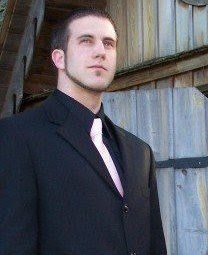In the Know #21
January 25, 2008
Dictionary.com's Word of the Day
disheveled \dih-SHEV-uhld\, adjective;
also dishevelled:
In loose disorder; disarranged; unkempt; as, "disheveled hair."
In the news: - Romano Prodi (pictured), Italy's President of the Council of Ministers, loses a vote of confidence and resigns.
- Romano Prodi (pictured), Italy's President of the Council of Ministers, loses a vote of confidence and resigns.
- Democratic Presidential candidate Dennis Kucinich quits his bid for the presidency.
- An Iraqi police chief is killed in a suicide bombing.
Today in History, according to Wikipedia:
41 - Claudius is accepted as Roman Emperor after Caligula is killed.
1919 - The League of Nations is created. 1924 - The first Winter Olympics opens in Chamonix, France.
1924 - The first Winter Olympics opens in Chamonix, France.
1949 - At the Hollywood Athletic Club, the first Emmy Awards (pictured) are presented.
1949 - David Ben-Gurion becomes the first Prime Minister of Israel.
1961 - President John F. Kennedy delivers the first live televised presidential news conference.
2004 - Mars rovers Opportunity lands on the surface of Mars.
Today's Famous Births:
1627 - Robert Boyle, Irish chemist 1741 - Benedict Arnold, American general notorious for treason
1741 - Benedict Arnold, American general notorious for treason
1759 - Robert Burns (pictured), Scottish poet, Auld Lang Syne
1882 - Virginia Woolf, English writer
1938 - Etta James, American singer, "At Last"
1941 - Buddy Baker, American race car driver and commentator
1942 - Eusébio, Portuguese soccer player
1951 - Steve Prefontaine, American runner
1962 - Chris Chelios, American hockey player ,11 All-Star games
1981 - Alicia Keys, American singer
1984 - Robinho, Brazilian soccer player
Trivia
Today's Category - per request, Mercury...the planet, not the element ~ Mercury is the closest planet to the sun.
~ Mercury is the closest planet to the sun.
~ Earth's circumference is only 2.61 times the size of Mercury, but earth is 18 times as massive.
~ A year on Mercury lasts just under 88 days.
~ A day on Mercury lasts over 4200 hours (over 175 earth days).
~ Surface temperatures range from 80K (-315F) to 700K (800F). ~ Two NASA missions have studied Mercury: Mariner 10 (1974-75, upper picture)) and MESSENGER (MErcury Surface, Space ENvironment, GEochemistry, and Ranging - 2008, lower picture) [Note quality difference in photos].
~ Two NASA missions have studied Mercury: Mariner 10 (1974-75, upper picture)) and MESSENGER (MErcury Surface, Space ENvironment, GEochemistry, and Ranging - 2008, lower picture) [Note quality difference in photos].
~ The atmosphere of Mercury contains hydrogen, helium, oxygen, sodium, calcium and potassium.
~ At its brightest, Mercury is an apparent magnitude of -2.0, which is brighter than Sirius (the brightest star in apparent magnitude).
I always wondered...
...how that yellow first down line on a televised football game works...
It would seem that placing that little yellow line on our magical living room screens might be so very simple, but this could not be farther from the truth. A colossal amount of technology is put into play to make it possible. Sportvision created a system called 1st and Ten to digitally paint the line.
The system must:
- know the orientation of the field
- know where each yard line is
- sense the camera's movement
- recalculate perspectives, based on the camera's movement, at 30 frames per second (actually works at 60 fps)
- cause the line to follow the curve of the field
- work with multiple cameras
- sense when players, refs or the ball cross the line, so as to not draw the line over them
- be aware of superimposed graphics
There are several mechanisms and means used to address these issues. First, each camera is equipped with a special mount that records the cameras pan, tilt, zoom and focus. Stored on a main PC is a 3-D model of the field and the location of each camera. This allows the camera mount encoders to work with the 3-D model to appropriately place the line.
Also included in the software of the system is a color palette that distinguishes the field from the players, refs and the ball. When a pixel of a color not representing the field or first down lines passes over the line, the line disappears only where that pixel is.
It takes four people to run the 1st and Ten: a spotter and operator input the first down line manually, then two other operators make any corrections to the line during the game (such as adding colors to the palette like mud or snow). The system utilizes 8 computers in total.
["How it works" reference: HowStuffWorks.com}
[All references from Wikipedia.org unless otherwise noted]


No comments:
Post a Comment